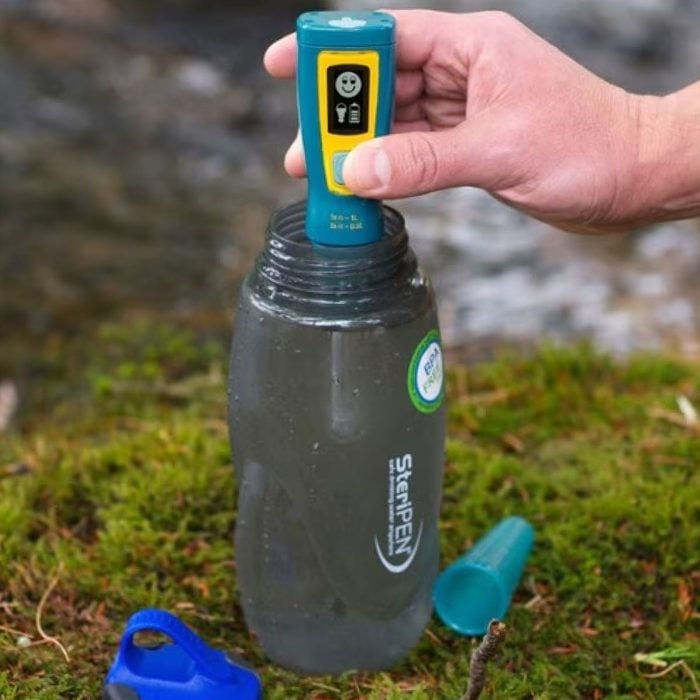Whether for an emergency kit, a home system or an on-the-go solution, here are the easiest and best ways to filter water.
10 Ways to Filter Water
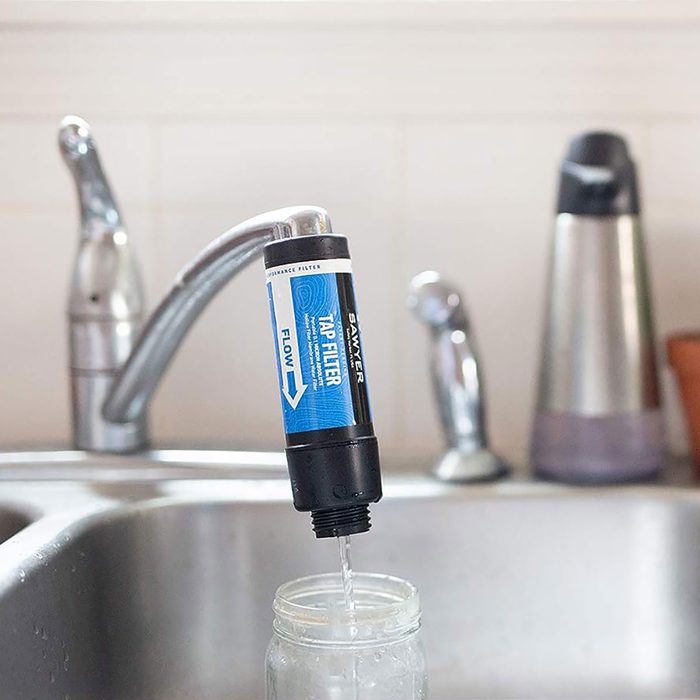
Water Tap Filter
One of the cheapest and most useful ways to filter water for emergency preparedness is a simple, compact filter that screws onto a hose bib or faucet. Most models of this type remove bacteria, protozoa, sediment and microplastics.
“These are great if you have a hurricane or an earthquake or something else that puts you under a boil water advisory,” says Darrel Larson, international director for Sawyer Products. “Some people mount them on a five-gallon bucket. Then you can take it down to a lake, a creek or somebody’s swimming pool, fill it up and filter a liter of water per minute.”
Note: If using pool water, filter it, then let it sit outside for 24 hours so the chlorine dissipates.
And these really do work. After Sawyer deployed 130,000 filters in Liberia, waterborne sicknesses like diarrhea dropped from 36% of the population to less than 2%. These also last for years, even under constant field use.
Look for ones that accommodate various tap sizes and filter down to 0.1 microns, like Sawyer’s Tap Water Filtration System. Clean these filters regularly with a syringe (some models, including Sawyer’s, come with one) or similar device to flush water backward through them.
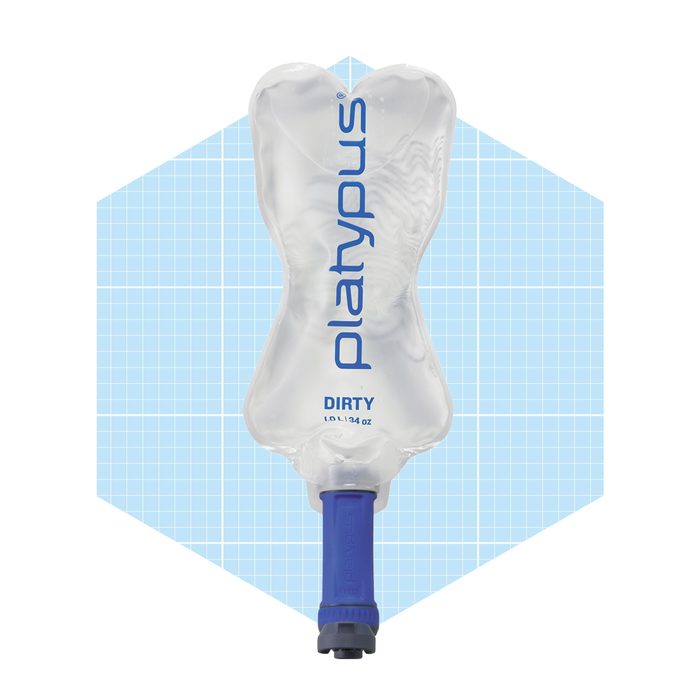
Other Portable Water Filters
There are lots of portable squeeze, pump and gravity filters on the market popular with outdoor enthusiasts and people creating go-bags and other emergency preparedness kits.
If they have the word “filter” in the product name, they’re likely good for getting out bacteria, protozoa, sediment and microplastics. Just look for ones that filter down to 0.1 microns. If they have the word “purifier” they will likely also remove viruses. Most will not remove longer-term exposure hazards like pesticides, chemicals, heavy metals and fertilizers.
A few of the configurations travel water filters come in include:
- Tabletop pumps, like the LifeSaver Cube and JerryCan purifiers;
- Water bottle toppers like the Sawyer Squeeze;
- Water bottle straws like LifeStraw;
- Water bottles with purifiers built in, like Water-to-Go (made from sugar cane instead of plastic) and Sawyer’s S3, both of which also remove pesticides and chemicals;
- Squeezable bags like the Platypus QuickDraw filter;
- Hanging gravity filters, like MSR’s Guardian Gravity Purifier or Sawyer’s One Gallon filter;
- Hand-held pumps, like MSR’s MiniWorks EX Purifier system;
- Rechargeable pump purifiers, like the Guzzle H2O Stream UV/carbon purifier.
Precautionary note: For all of the above filters as well as the tap filter, don’t let them freeze, or the filter fibers will burst. Also, using them in a place with a lot of airborne volcanic ash can compromise the filter.
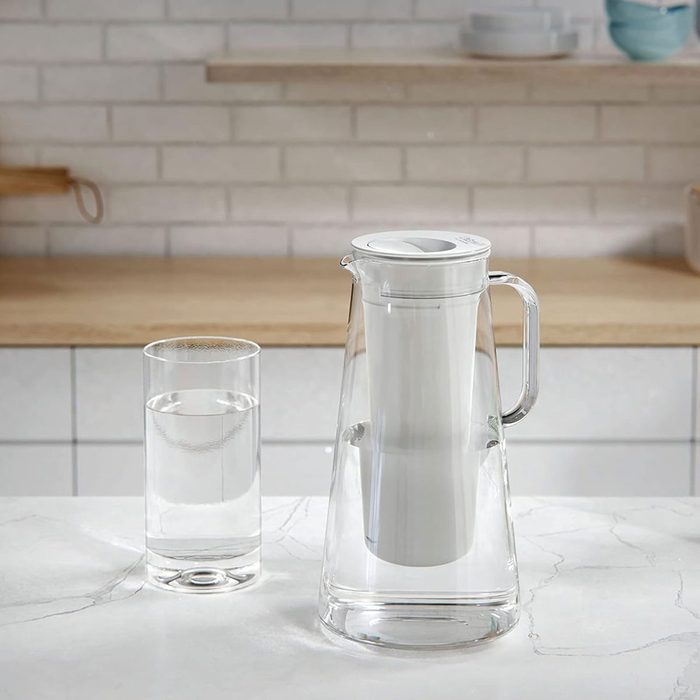
Carbon Block and Activated Carbon Water Filters
Carbon filters are one of the most affordable choices for making tap water taste and smell better. Some models also reduce chlorine, heavy metals like lead and mercury, asbestos and volatile organic compounds (VOCs).
On their own, they don’t remove bacteria, viruses, protozoa, hard-water minerals (calcium and magnesium), arsenic, fluoride or nitrates. That’s why some filters combine carbon and filters with fiber or other membrane filters.
Carbon filters come in many forms, from countertop pitchers to whole-house filters, and some people feel confident DIYing that installation. Carbon blocks tend to be more effective, while activated carbon is less expensive. All types of carbon water filters need to be periodically cleaned and have their carbon cartridges replaced.

Reverse Osmosis Water Filters
Reverse osmosis filters effectively removing a large number of contaminants, including bacteria, protozoa, viruses, arsenic, fluoride, hexavalent chromium, nitrates, pharmaceuticals, perchlorate and PFAS. They’re also good for reducing sodium from water softeners.
Drawbacks? They waste a lot of water (three to five times what they produce); they’re expensive; they’re difficult to install (but some people still DIY the job); and most won’t work when the power goes out.
Usually reserved for drinking and cooking water, they’re typically installed under the kitchen sink. When purchasing a reverse osmosis filter, look for one like this one from iSpring that uses carbon and sediment filters and replaces the helpful minerals it filters out, like calcium, iron and magnesium. This also make water taste better.
For maintenance, you’ll need to replace filter cartridges and filter membranes periodically.

Ion Exchange Water Filters (Water Softeners)
Most water softeners use an ion-exchange process, which replaces hard calcium and magnesium ions with softer ones like sodium. These are whole-house filters that prevent buildup in plumbing pipes, fixtures and appliances like dishwashers.
They otherwise don’t filter out many contaminants, including viruses, bacteria and protozoa. However, they do reduce barium, radium, nitrates, fluoride, sulfate and arsenic.
They’re not recommended as a drinking water source for people who need a low-sodium diet. Nor should softened water be used to water gardens, because of its higher sodium content. Maintenance includes adding salt to the brine tank and cleaning it annually.
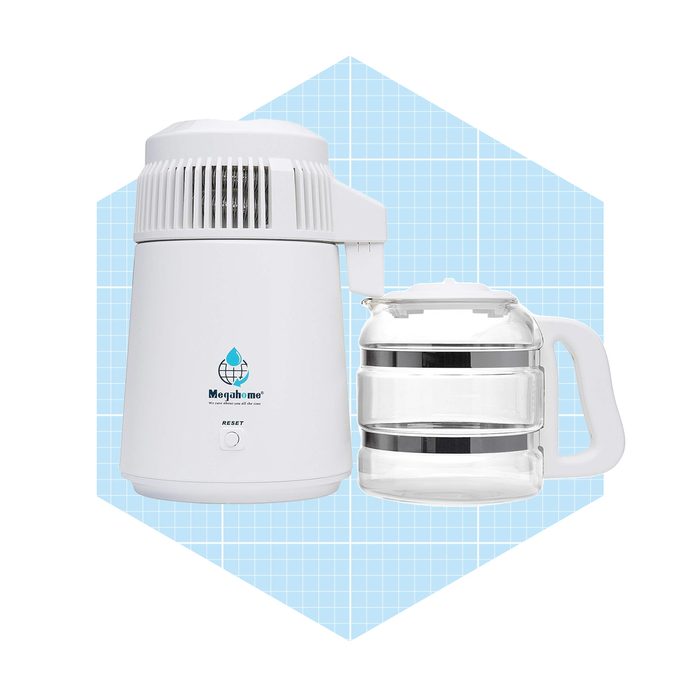
Water Distillation Filter
Countertop water distillers filter water by heating it into steam, then condensing it again. This gets rid of bacteria, protozoa and most viruses, plus minerals and chemicals with a higher boiling point than water, like arsenic, iron, lead, sodium, sulfate and nitrate. But it doesn’t remove VOCs or chlorine.
These filters are also relatively expensive and won’t work when the power goes out.

Whole-House Filters
By definition, whole-house filters are installed where your main water system enters your home, so they cover all of your taps and appliances. Some of these are as simple as a carbon filter, while others are complex and include ultraviolet radiation. For that reason, they vary widely in what contaminants they remove.
Most at least reduce sediment and varying degrees of contaminants including chlorine, plus they make water taste better. The downside? They’re often expensive. And most people don’t need filtered water out of every tap, just the ones they drink out of. Plus, by removing chlorine, they may allow harmful bacteria to grow in your pipes.

Ultraviolet (UV) Water Filter
Ultraviolet water filters are excellent for removing bacteria, viruses and protozoa, as long as sediment is filtered out of the water first. Otherwise, microbes can hide behind the particles and survive.
UV systems can be part of a complicated whole-house filter, right down to a simple, portable pen-sized light that can be used in a water bottle. Keep in mind, if the power goes out, your whole-house UV filter won’t work.
Another downside of UV: It doesn’t remove many other contaminants from water, except for chlorine and a small amount of PFAS.
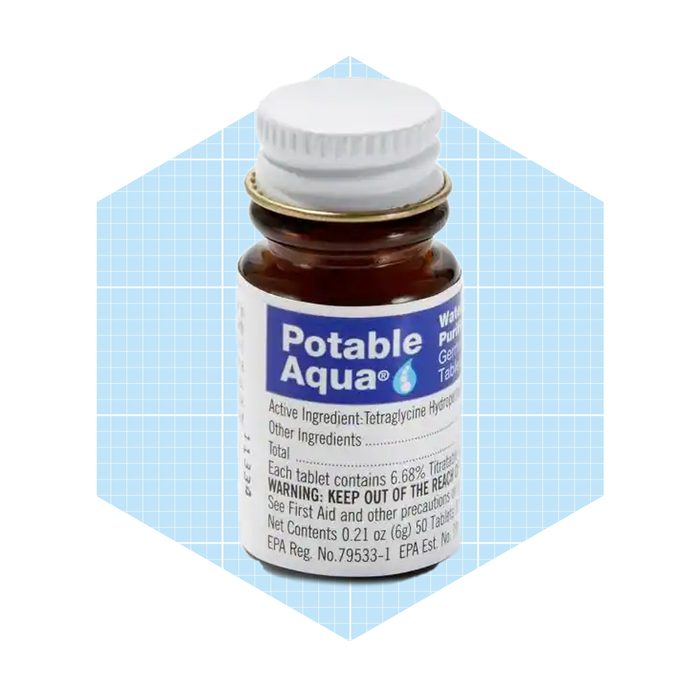
Chemical Water Treatments
Municipal water treatments often use chlorine to remove bacteria. On a home-use scale, chlorine can also be used in small amounts to clear wells of bacteria and treat water in emergency situations.
The Environmental Protection Agency (EPA) recommends adding eight drops of 6% regular, unscented chlorine bleach, or six drops of 8.25% bleach, per gallon of water. Stir and let it stand for at least 30 minutes before using it.
Beyond bleach, other chemical tablets are available to make water potable by removing bacteria and protozoa, like Aquatabs and Potable Aqua. They use various chemical technologies, including iodine, chlorine dioxide and sodium dichlorisocyan. Always follow manufacturer directions carefully to prevent over- or under-dosing.
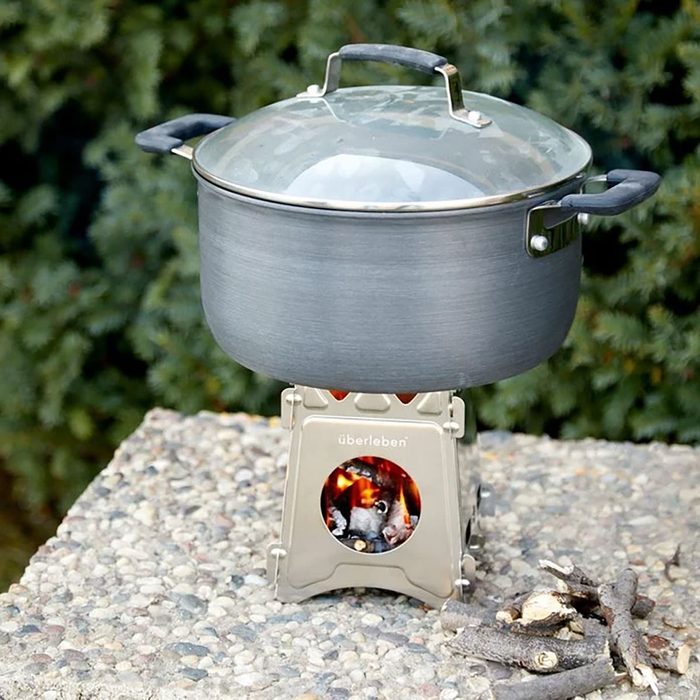
Boiling Water
Boiling water kills bacteria, viruses and protozoa. But it uses a lot of fuel, which might be difficult to replace in an emergency situation. If the water you want to boil is murky, pour it through a clean cloth, paper towel or coffee filter. Then heat it at a full rolling boil for at least one minute (three minutes if you’re above 6,500 feet in elevation). Now it’s safe to drink.
You can go one step further and distill it by collecting the steam into a separate container. That will help remove some harmful minerals and chemicals.





















